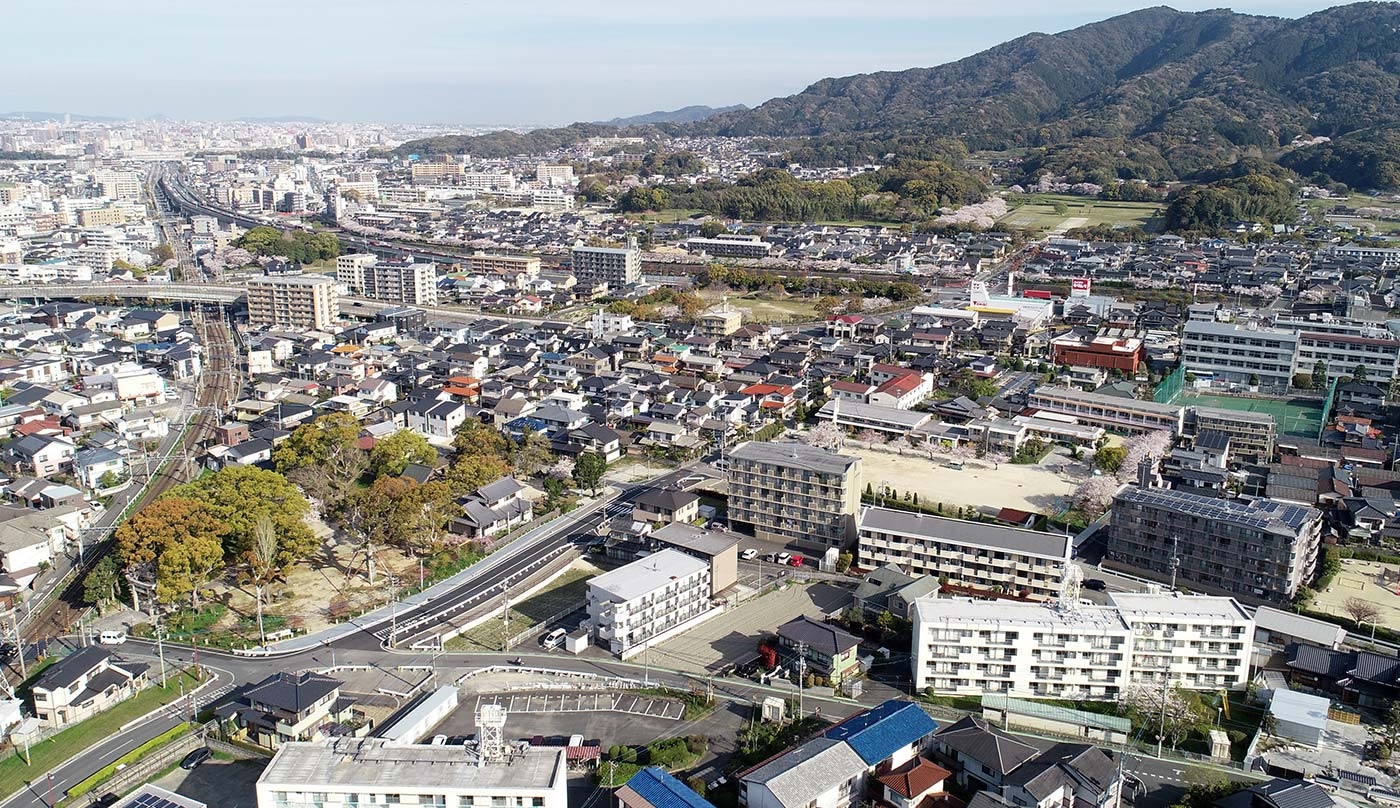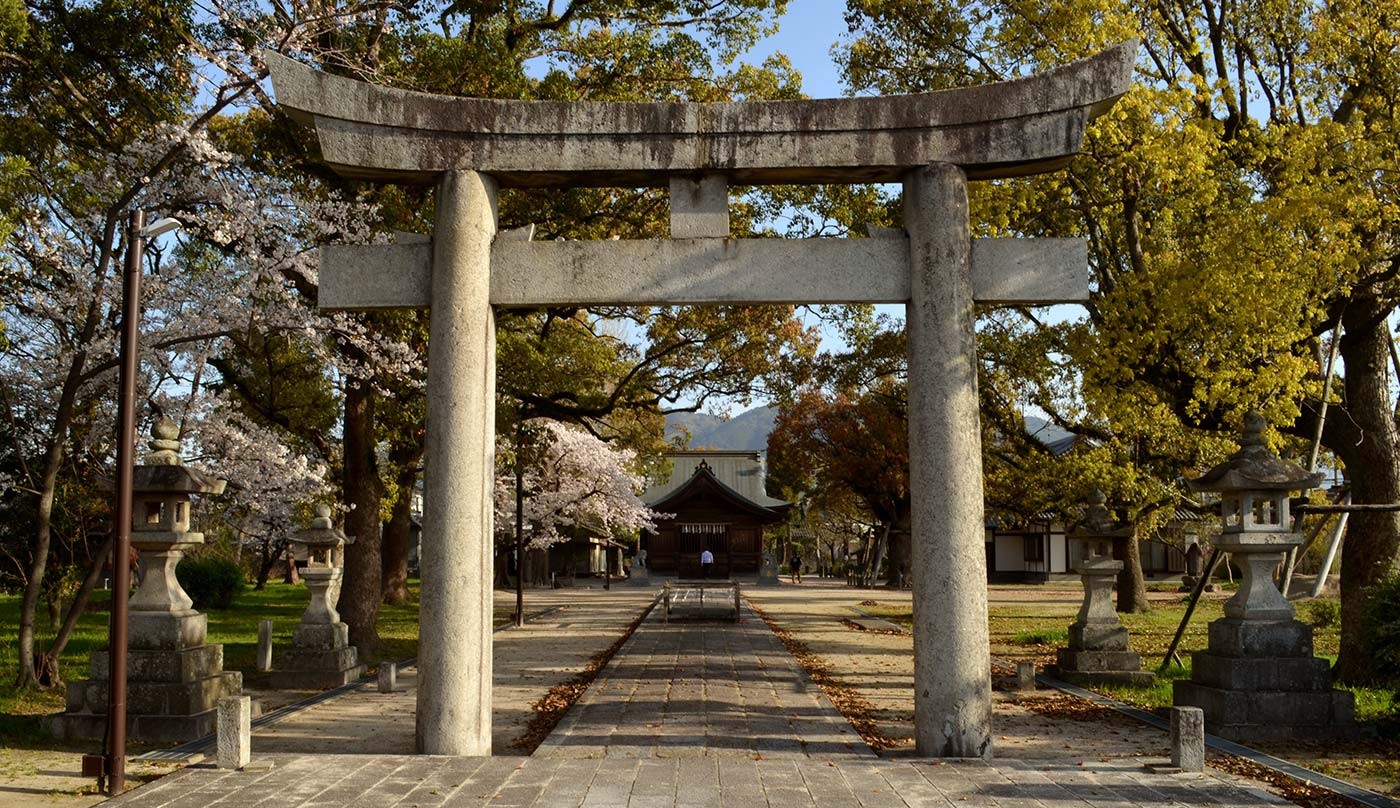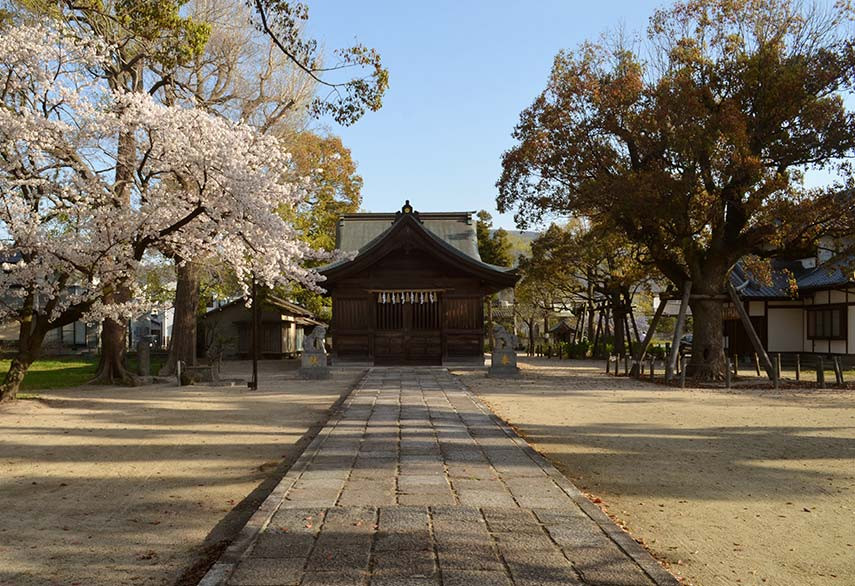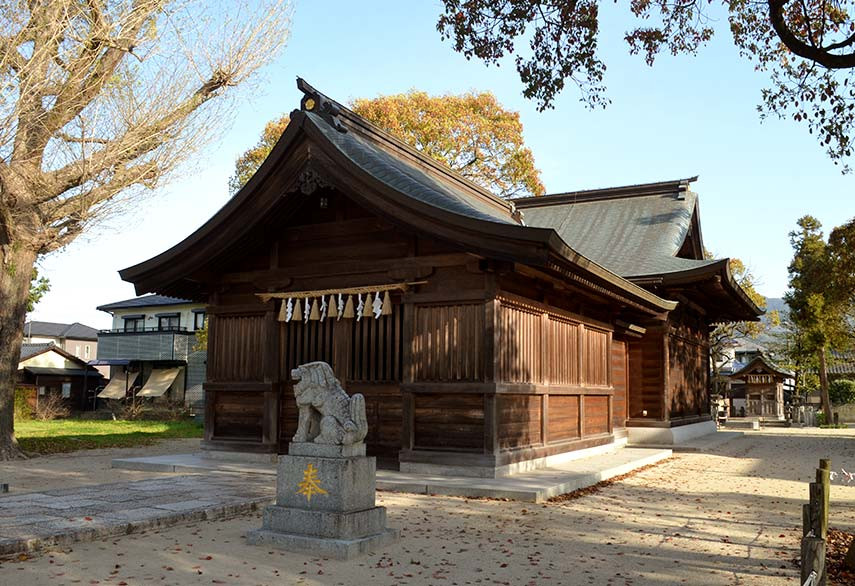
South Hall Ruins
| Location | City of Dazaifu |
|---|---|
| Designation | Undesignated |
| Emblem | 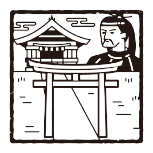 |
The hall was an official residence for officials who were transferred from the national capital. The South Hall is known as the place where Sugawara no Michizane lived while in exile. After that, Fujiwara no Korenori, the Senior Governor of the time, built Jomyo-in Shrine to console the spirit of Michizane in 1023. In 1101, Oe no Masafusa, Provisional Governor of Dazaifu, started a Jinko procession linking this place and Tenmangu Shrine. This site is now home to Enokisha Shrine. There is a Kyakukan (guesthouse for foreign delegations) site nearby, and this area offers an image of how Suzaku Avenue appeared in ancient times.
The Residence of Sugawara no Michizane in His Winter Years
Sugawara no Michizane was demoted from Kyoto to Dazaifu in 901, where he spent roughly two years in the “Western Capital” before his death in 903. During this time, the official residence that served as Michizane’s living space was recorded in the Chinese poetry collection “Kanke Koshu ("later anthology of Sugawara no Michizane").” as the “Southern Hall” and was located on the right side of Suzaku Avenue, but it was so desolate that Michizane wrote of it as the “empty official residence”. In 1023, more than 100 years after Michizane's death, Vice Minister Fujiwara no Korenori built Jomyo-in Temple to mourn his soul, which later came to be called “Enokidera Temple”, and is currently called Enokisha Shrine. The north-south road on the east side of the precincts is a remnant of Suzaku Avenue during that era. Stand in the tranquil shrine forest an contemplate the winter years of the eminent literary great Sugawara no Michizane.
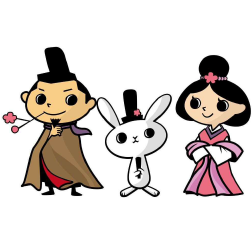
Dazaifu City Characters/Tabito the Traveler, Otomo no Tabitto, Princess Reiwa
Near Enokisha Shrine are places associated with Michizane.
At the top of the hill to the east is the tomb of Kumamaro, a young boy Michizane brought with him who died young. To the side of the tomb is a plum tree with blossoms that have more petals than normal, earning it the name six-petaled plum.
To the south is the Tonokoga Tobiume (“Flying Plum”). It is said that the Tobiume plum tree flew here, and after it was replated next to the main shrine of Tenmangu, its seeds were planted in its original location.
Access Information
Address
Enokisha Shrine: 818-0103 6-18-1 Suzaku, Dazaifu, Fukuoka
By Train
About 5 min on foot from Nishitetsu Futsukaichi Station

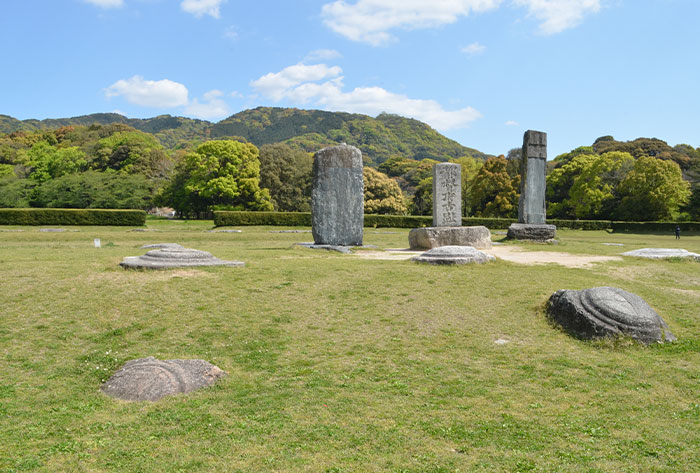
About the Western Capital
The “Western Capital”, created in Tsukushi 1300 years ago. Cultural assets speaking to the magnificence of this city of international exchange that flourished in East Asia are scattered across the cities of Chikushino, Kasuga, Onojo, Dazaifu, Nakagawa, and Umi in Fukuoka Prefecture as well as the town of Kiyama in Saga Prefecture.

